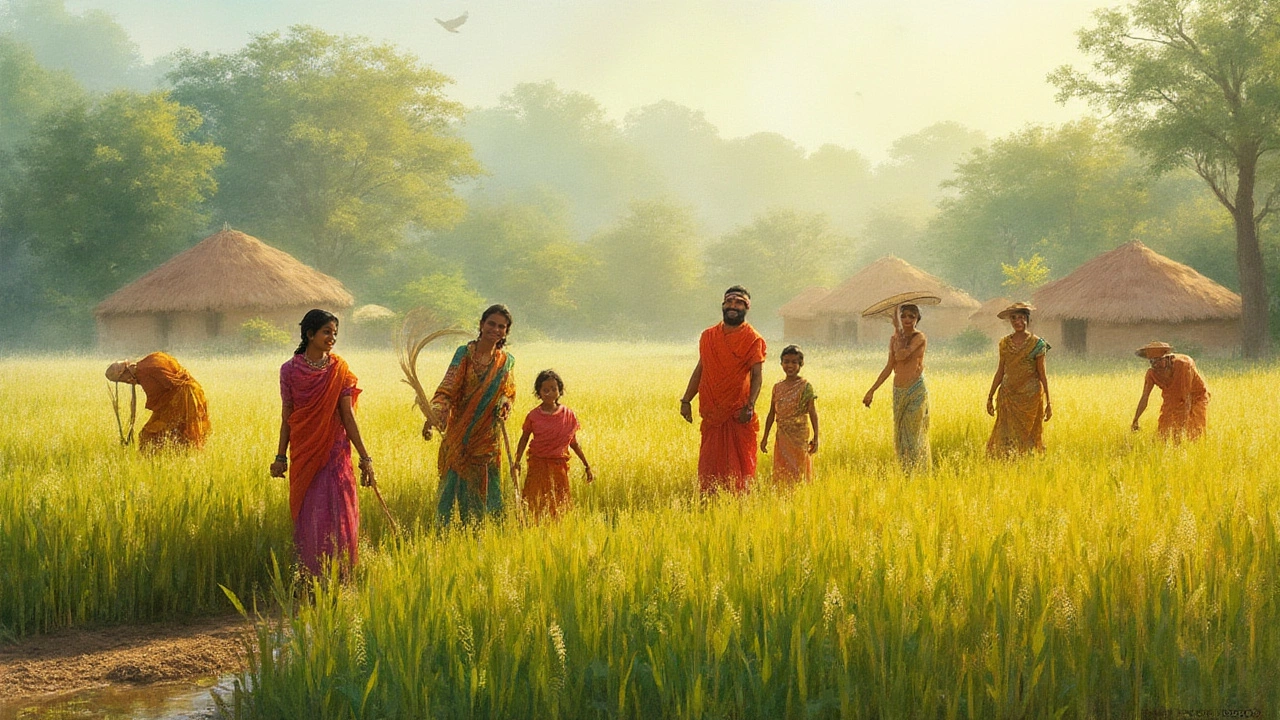Discover the meaning behind 'poor man's crop,' why certain staple crops earn this name, and smart tips for growing them in your own garden.
Poor Man's Crop: Affordable, Easy-to-Grow Plants for Indian Gardens
When we talk about a poor man's crop, a low-cost, high-yield plant that feeds families and thrives with minimal inputs. Also known as subsistence crop, it’s the backbone of small farms and home gardens across India—plants that don’t need fancy fertilizers, expensive irrigation, or perfect soil to grow strong and feed many. These aren’t glamorous cash crops like sugarcane or cotton. They’re the quiet heroes: cowpeas that climb fences with no help, amaranth that pops up after monsoon rains, and moringa trees that give leaves, pods, and seeds all year. Farmers who can’t afford hybrid seeds or chemical sprays rely on these. And they’re not just surviving—they’re thriving, because these crops are built for India’s climate, not imported from labs.
A poor man's crop, a low-cost, high-yield plant that feeds families and thrives with minimal inputs. Also known as subsistence crop, it’s the backbone of small farms and home gardens across India—plants that don’t need fancy fertilizers, expensive irrigation, or perfect soil to grow strong and feed many. These aren’t glamorous cash crops like sugarcane or cotton. They’re the quiet heroes: cowpeas that climb fences with no help, amaranth that pops up after monsoon rains, and moringa trees that give leaves, pods, and seeds all year. Farmers who can’t afford hybrid seeds or chemical sprays rely on these. And they’re not just surviving—they’re thriving, because these crops are built for India’s climate, not imported from labs.
What makes a crop fit for the poor isn’t just price—it’s resilience. A poor man’s crop doesn’t need perfect sun exposure, like hydrangeas do on balconies. It doesn’t require drip systems that clog or soil amendments that cost more than the seed. It grows in cracked earth, survives dry spells, and gives back more than it takes. Think of the garden soil improvement, natural ways to make dense, clay-heavy land workable without buying expensive materials methods used in Indian villages—compost from kitchen scraps, leaf mold from fallen trees, or ash from cooking fires. These are the same tools that turn poor land into productive ground. And they’re the reason you’ll find fast-growing plants, vegetables that mature in 30 days or less, perfect for quick harvests and food security like radishes, spinach, and cluster beans in nearly every backyard.
These crops also connect to bigger ideas—like sustainable gardening, farming that works with nature instead of against it, using local resources and minimizing waste. You won’t find synthetic pesticides in a poor man’s garden. Instead, you’ll see neem leaves used as natural repellents, or marigolds planted to keep bugs away from beans. This isn’t theory. It’s practice passed down for generations. And it’s exactly why the posts here cover everything from year-round blooming flowers in India, plants that keep your garden alive through heat, rain, and cold without constant care to how to fix drip emitters, a common irrigation tool that fails often but can be repaired with simple fixes using a pin and a bottle cap.
You won’t find high-tech solutions here. You’ll find real solutions—plants that grow when you forget to water them, that feed you even when money is tight, and that heal the land as they grow. The posts below are a collection of those real stories: how to grow amaranth in a pot, why cowpeas are better than beans for dry soil, how to use kitchen waste to make compost that beats store-bought fertilizer, and which plants bloom nonstop even in Delhi’s summer heat. These aren’t just gardening tips. They’re survival skills. And if you’re trying to grow food without breaking the bank, this is where you start.
